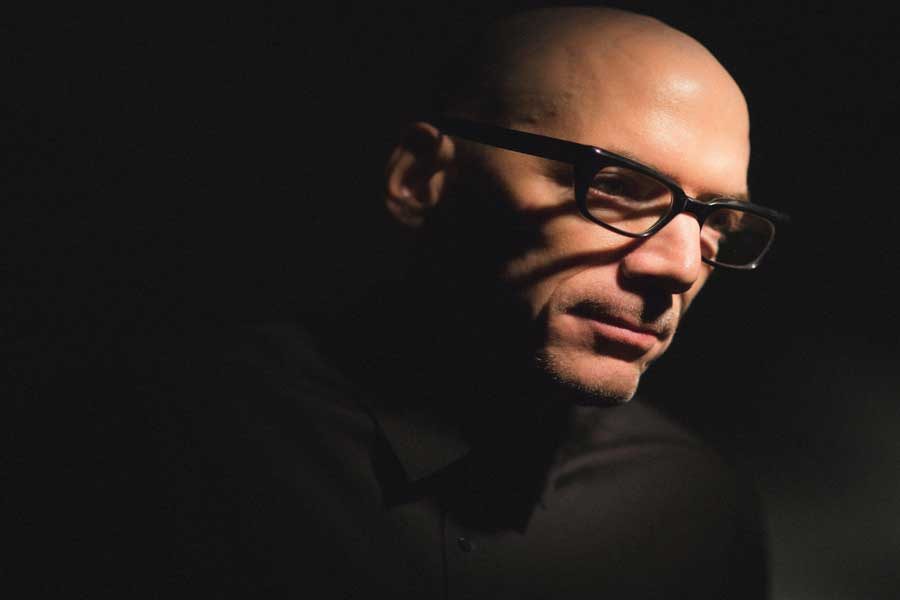Northwestern professor to premiere play on psychoanalyst at New York festival
David Tolchinsky, the co-director of the MFA in Writing for Screen and Stage at the School of Communication and former department chair of the Radio, Television, Film department. Tolchinsky’s new play, “An Attempt to Heal in the Contemporary World,” examines the theories of Wilhelm Reich, a protégé of Sigmund Freud whose radical theories about the body’s influence on the mind were rejected.
October 10, 2018
A&E
Some argue life is mind over matter, but revolutionary psychoanalyst and the inspiration of an upcoming New York play Wilhelm Reich would beg to differ.
Reich was a protégé of Sigmund Freud whose radical theories about the body’s influence on the mind were rejected, leaving him ostracized from the psychoanalytic community. It’s Reich’s controversial shift in thinking at the center of “An Attempt to Heal in the Contemporary World,” School of Communication Prof. David Tolchinsky’s second play. The play is set to premiere at the New York International Fringe Festival on Oct. 16.
Tolchinsky, the co-director of the Master’s in Fine Arts in Writing for Screen and Stage at the School of Communication and former department chair of the Radio, Television, and Film department, said he was inspired by Reich’s intellectual betrayal of his peer Freud.
“(Reich) struck me as such a Shakespearean character in that he was in Freud’s inner circle, tapped to be his successor,” Tolchinsky said. “Then he turned Freud’s theories back on Freud like a rebellious son.”
Tolchinsky became interested in Reich and his theories over a decade ago and has wanted to investigate his ideas through art ever since. The play incorporates elements of Tolchinsky’s love of cinema, specifically using elements of the 1957 film, “The Incredible Shrinking Man.” In the movie, the main character deals with issues of the body affecting the mind, similar to Reich’s theories.
Tolchinsky said Reich was someone who refused to be “boxed in,” similar to the play itself.
“I think it’s appropriate that it’s a play that combines performance and film because Reich was someone who started out as an analyst and then…he suddenly decided that he was a biological scientist,” Tolchinsky said.
Similar to Reich, the project also underwent a transformation. Working alongside longtime collaborator Dan Silverstein, the associate director of collections and exhibition management at the Block Museum of Art, Tolchinsky initially developed his idea as a multimedia installation.
Silverstein considers Tolchinsky to be a creative teammate: The two have worked together on several exhibition projects in the past. Because of their history creating sculptures and museum installations, Tolchinsky first pitched Reich’s theories to Silverstein as the subject of a piece of physical art.
“One thing led to another, and Dave started writing…and the performative elements really gelled for him as a play,” Silverstein said.
Silverstein, the show’s visual designer, now handles set and prop design. New to the theatrical world, Silverstein used his background in exhibitions to create a set that transforms between the two acts of the play. The first act, he said, is set in a more recognizable world, while the second act moves into what Silverstein called “Reich’s Reality,” with the set becoming more sparse and abstract. These designs take inspiration from the project’s original concept, when Tolchinsky received funding to investigate the idea that eventually became the play.
The money came from an Undergraduate Research Assistant Program grant, so Tolchinsky and Silverstein could receive help examining Reich’s life and work. Because of this, Aimee Hechler (Communication ’15), then an undergraduate student, worked closely on what would eventually become “An Attempt to Heal in the Contemporary World.” She said Tolchinsky focused the investigation on finding ways to make Reich’s work relevant to modern society.
“(Reich’s theories are) something that not a lot of people know about so it’s kind of cool that David is so focused in on it and finding ways to relate (Reich’s) research to a current world and narrative,” she said.
Email: [email protected]
Twitter: @andrewtoban


